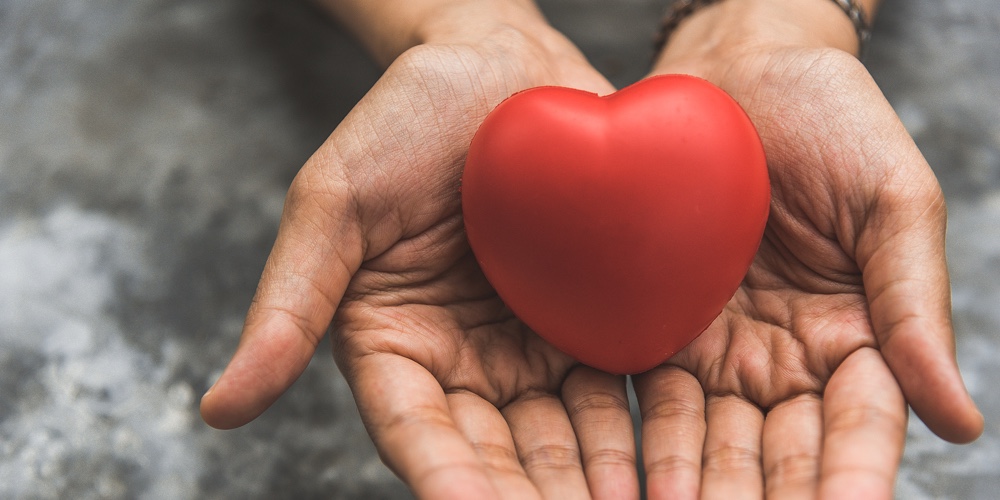Four things about empathy that might surprise you

I love learning new things. I subscribe to everything from trade publications to Fast Company to TED Talks daily summaries, and I have a goal of reading one article or watching one video from outside of the financial services industry every day. I find this mini capsule of daily research expands my scope and helps me problem solve in new ways.
Imagine my surprise and excitement when I discovered some new, “big brain” ideas about empathy. Of course, you were the first one I thought of to share this information with, so let’s dive right in…
1. Empathy is rooted in neuroscience: I told you these were “big brain” ideas – turns out that’s literally true! Typically, empathy is seen as a purely emotional response. I’m no neuroscientist, but I also know that emotions are rooted in the brain, so it makes sense that empathy is a reaction in the brain. The cool thing is that neuroscientists have discovered that specific regions of the brain are involved in processing empathy. (Specifically, the anterior insula and anterior cingulate cortex in case you’re playing Jeopardy later.) Neuroscientists have also discovered that mirror neurons, which fire both when we perform an action and when we observe someone else performing the same action, play a crucial role in empathetic responses. That means you can watch and listen to someone empathize and pick up on the feelings they’re displaying to improve your own empathetic responses.
2. Empathy can be learned and cultivated: There are assessments you can take to help you figure out how empathetic you are at a given point in time. Unfortunately, some people taking those assessments walk away concluding that they possess zero empathy and that they’re a lost cause when it comes to cultivating it. Contrary to popular belief, empathy is not solely something you’re born with or something that you possess a finite ability to implement. It can also be developed and honed through deliberate practice and experience. Research has shown that engaging in activities such as perspective-taking exercises and immersive experiences with diverse groups of people can enhance your empathetic abilities over time. Indeed, empathy is not a fixed quantity in our lives! We all have the potential for growth and improvement in empathizing with our colleagues, members, and family.
3. Empathy has different dimensions: Empathy is not simply one thing. It’s comprised of various dimensions that can show up in different ways. Recognizing these different facets of empathy can deepen our understanding of human interaction and pave the way for more effective communication and support.
- Cognitive empathy involves recognizing the emotions of others and taking their perspective. I would argue that simply recognizing someone else’s emotions isn’t going far enough on your empathy journey.
- Affective empathy involves sharing and resonating with someone else’s emotions. This is where we not only recognize an emotion, it’s also reflecting that emotion back to the other person so they feel seen, heard, and validated in their emotion. Combining cognitive and affective empathy are at the root of my empathy workshops.
- Compassionate empathy involves not only understanding others’ feelings but also being moved to help alleviate their suffering. If you’ve experienced empathy training with me, you know that I believe compassionate empathy is reserved for a few, select instances where a member or colleague is truly struggling. Otherwise, we’ll burn ourselves out and not have the emotional reserves to create a positive experience for the next interaction we encounter. Which leads us to our fourth surprising fact!
4. Empathy can be felt in the body: Oftentimes, it’s easy to recognize what has a physical impact on our bodies. For example, lifting weights may cause our arms to feel sore the next day, or falling onto the sidewalk may cause a scraped knee. Sometimes our bodies can experience physical changes as a response to something harder to identify: our emotions. For example, you might feel a rush of blood to the head because you’re angry, or your hands might shake because you’re nervous or excited. Because empathizing with someone is rooted in our emotions (see #1), we can often feel the effects of empathizing with someone long after the conversation has ended. That’s why I encourage people to start by empathizing with positive emotions. You’ll get an adrenalin rush by empathizing with someone else’s happiness! So cool!
Empathy helps us foster stronger interpersonal connections and relationships. When we empathize with others, we are better able to understand their perspectives, emotions, and experiences, which lays the groundwork for mutual trust, respect, and compassion. Additionally, empathetic leaders are often more effective at motivating and inspiring their teams, fostering a positive organizational culture, and driving collective success. Overall, empathy acts as a powerful catalyst for building connections and fostering a sense of belonging and community in all aspects of our lives.
Here’s to continued learning and strengthening of our empathy muscles! To learn more, reach out to me at angela@cudifference.com. I’d love to hear more about how empathy has impacted your life and your team.





